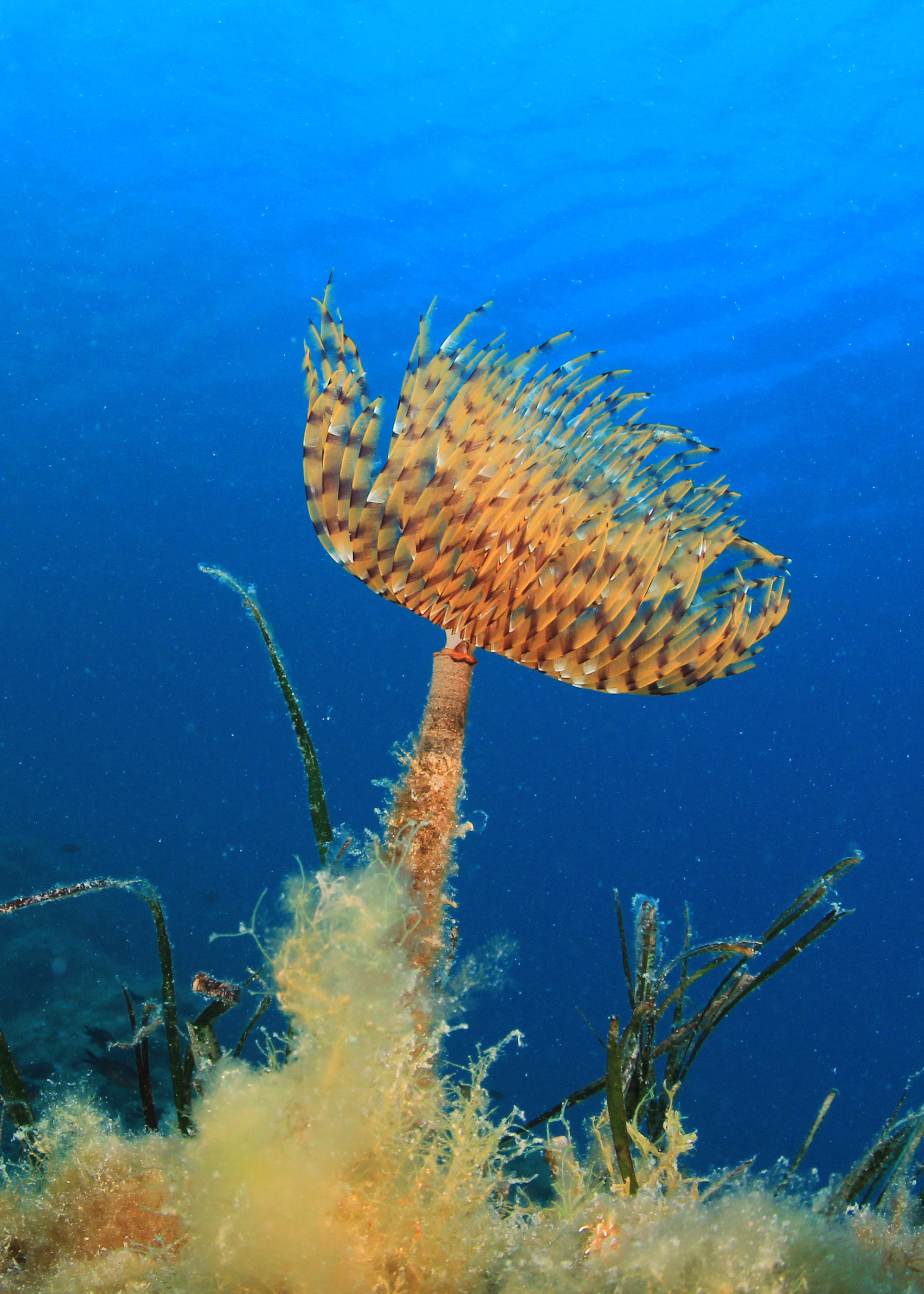Tubeworm is a marine worm that lives in a tube. Sabellid tubeworms have tubes made of mucus strengthened with mud, sand particles, and shell fragments. The tubes stick upright from the seabed. Serpulid tubeworms construct hard tubes of the mineral calcium carbonate. Some types look like squeezed-out tubes of toothpaste, while others have coiled tubes like snail shells.

Both kinds of tubeworms have a structure called the crown at the end of the tube. Feathery body parts called radioles extend from the crown out into the surrounding sea water. The radioles pick up and trap small food particles from the water. The radioles also act as organs of respiration. Some tubeworms are called fan worms or feather duster worms in reference to their radioles.
A tubeworm’s tube is used for protection. If predators are nearby, the tubeworm can quickly retract into the safety of the tube. Serpulid tubeworms have a specialized plug called an operculum that blocks the entrance of the tube when they are hiding.
Tubeworms live out their entire adult life in one place on the ocean floor. To reproduce, many release their eggs and sperm into the water, and fertilization occurs externally. This type of reproduction is called broadcast spawning.
To find new places to grow, many tubeworms form larvae (young) that can swim for weeks or months. When a larva settles in a suitable spot, it undergoes metamorphosis, changing into its adult form.
Animals related to tubeworms called giant tubeworms live at great depths in the ocean. However, giant tubeworms are not true tubeworms.
